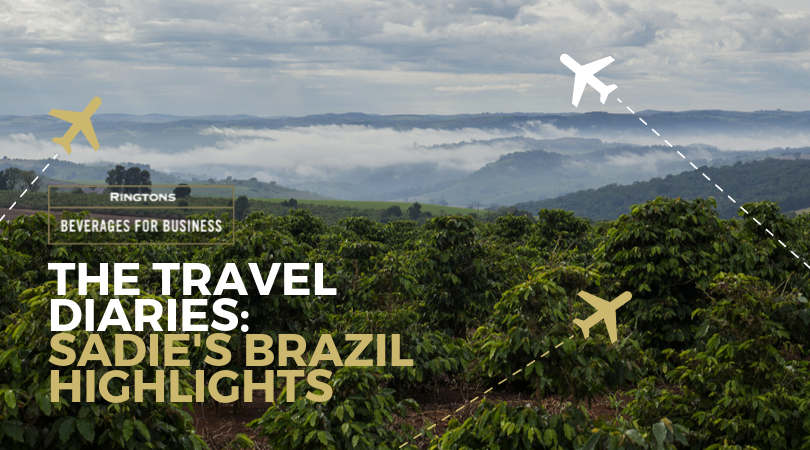There’s nothing quite like seeing a coffee harvest in action to get a true picture of the taste and quality of the year’s crop, which is why our Green Coffee Buyer and QC Manager Sadie reminisces on travelling to Brazil in 2019 to meet some of our producers.
Needless to say, it was a very busy and fruitful trip (pardon the pun) with Sadie travelling from farms to cupping labs to processing stations and meeting the people behind the coffee as she went.
Heading to origin is always exciting and inspiring, so here we challenged Sadie to pick out the three things that she loved most about the trip:
Shipments of coffee from a cooperative I visited in Brazil frequently make its way to the Port of Tyne, which is a pretty cool thought. From here, we blend, roast, pack and deliver it to our customers to enjoy across the country. Having seen the coffee production myself up close in Brazil, the sheer size and scale of coffee growing never ceases to amaze me. Being able to track the process, getting to know the people behind the scenes and to witness all the hard work that goes into growing and producing the coffee that ultimately ends up in your cup, is fascinating.
I mused that coffee is a constant education. Its journey is so complex and touches the lives of so many people, from the tired mum drinking her instant coffee at 5am to the small holder farmers handpicking their coffee cherries in the rolling hills. It connects people from all across the globe and is always full of surprises – origin trips continue to remind me of this.
It was great to see producers taking control and making decisions to overcome the challenges currently faced in coffee production. Minas Gerais, the region we visited is prolific for cultivating the varietal Mundo Novo, which is a high yielding coffee plant but vulnerable to pests and weather patterns. Rain and temperature triggers coffee plants to flower, which results in coffee cherries that contain two coffee beans/seeds within them. If rainfall is erratic multiple flowerings can occur, meaning that by the time harvest comes around the tree contains fruit which has ripened at different times, leading to unripe and overripe cherries on the same branch. This then leads to a reduction in the quality. In addition, cold weather during this time can also be a threat, as leaves are susceptible to rust brought on by harsh frosts, which can stall the development of the coffee cherry and in extreme cases, stop the tree flowering completely that year.
I was encouraged to see many farms are looking to the future by introducing Arara as an alternative varietal. One of the benefits is that it tends to flower fairly slowly, meaning cherries ripen more steadily but it’s higher yielding. It also is proving to be hardier than Mundo Novo and more resistant to disease and rust. Plus, the flavour qualities are proving to be excellent, so it is no surprise on many of the farms I visited, I saw nurseries full of Arara, rather than Mundo Novo.
Brazil has benefitted hugely from a national programme of agricultural research carried out by the Agronomic Institute of Campinas (IAC). This has allowed scientists to invest in coffee plant research, which they can then roll out across the country to support producers.
The need for a collective, collaborative and inclusive approach led to the development of World Coffee Research in 2012, which works with the in-country organisations to focus on specific problems their coffee industry faces – whether it be choosing the right variety of coffee to grow, or how to reduce the impact of plant disease. Ringtons have pledged to support this work by joining its Check Off program.
I have to say the hospitality on this trip was incredible – the people I met throughout my time in Brazil were warm and welcoming…and even better, I was treated to some delicious food… I still can’t stop thinking about the p֮ao de queijo (Brazilian cheese breads)!
It’s always great to meet people who are just as passionate about coffee as me, I really can’t wait for the next trip.
